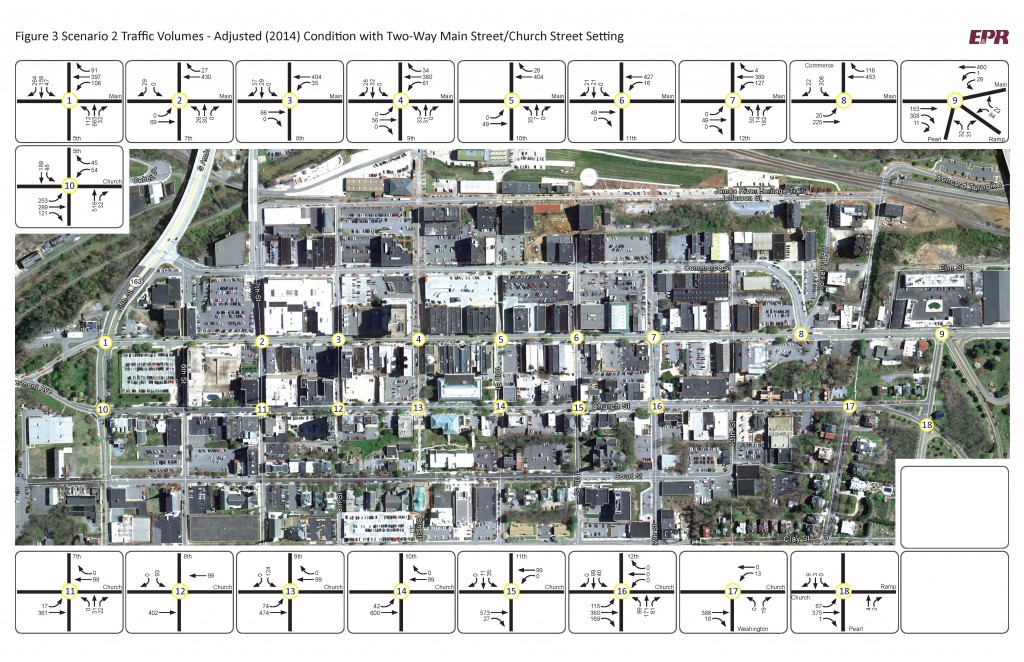As part of EPR’s ongoing service to the City of Lynchburg, EPR provided a study for converting the one-way pair streets of Main Street and Church Street back to two way travel. The request was the result of interest over the past decade from a contingent of merchants, and advocates for improved walkability in the downtown who expressed an interest in seeing the downtown converted back to two way travel. However, those in opposition expressed concerns about potential traffic congestion, impacts to parking if turn lanes are needed, impacts to and logistics for loading zones, and expense of implementation costs.
As a major downtown utility improvement project grew imminent, the City saw the opportunity to pursue streetscape improvements, and also the potential to convert to two way traffic since the streets were going to be significantly impacted by the utility project and reconstruction of the streets. Since the major utility project was going to be conducted in phases, the transportation study also needed to address phasing of the conversion, and interim traffic control strategies throughout the pending multiyear effort.
EPR conducted a study effort that included peak hour data collection at 18 locations downtown, followed by developing traffic reassignment and future year traffic projections. The network was analyzed in Synchro/ SimTraffic, and MUTCD warrants examined for multi-way STOP conditions and traffic signalization. Turn lane warrants were also addressed, along with suggestion for how to handle loading zones and other parking impacts. Throughout the study process EPR responded to questions and input from the City regarding ideas for phasing improvements based on the utility project phasing. Other ideas were identified for transition locations and methods for both the north and south ends of the project.
PR supported City staff’s effort with communications to stakeholders and City Council by providing graphics, and responses to various questions that were arising throughout the study process. After the completion of the study effort, other entities came forward to debate the need for the conversion, which has delayed adoption of the plan. The conversion remains a topic of discussion with the downtown merchants association and City Council, however the City now has full documentation needed to inform the overall discussion.
Note that EPR staff have been providing support to the City for the past 16 years. Bill Wuensch of EPR has filled in as City Traffic Engineer for three terms while the City searched for a permanent hire. EPR has conducted the full
gamut of traffic studies for the city, designed 25 traffic signals through the years, complete multimodal designs, SRTS designs, and many other civil and traffic engineering assignments for the City.


